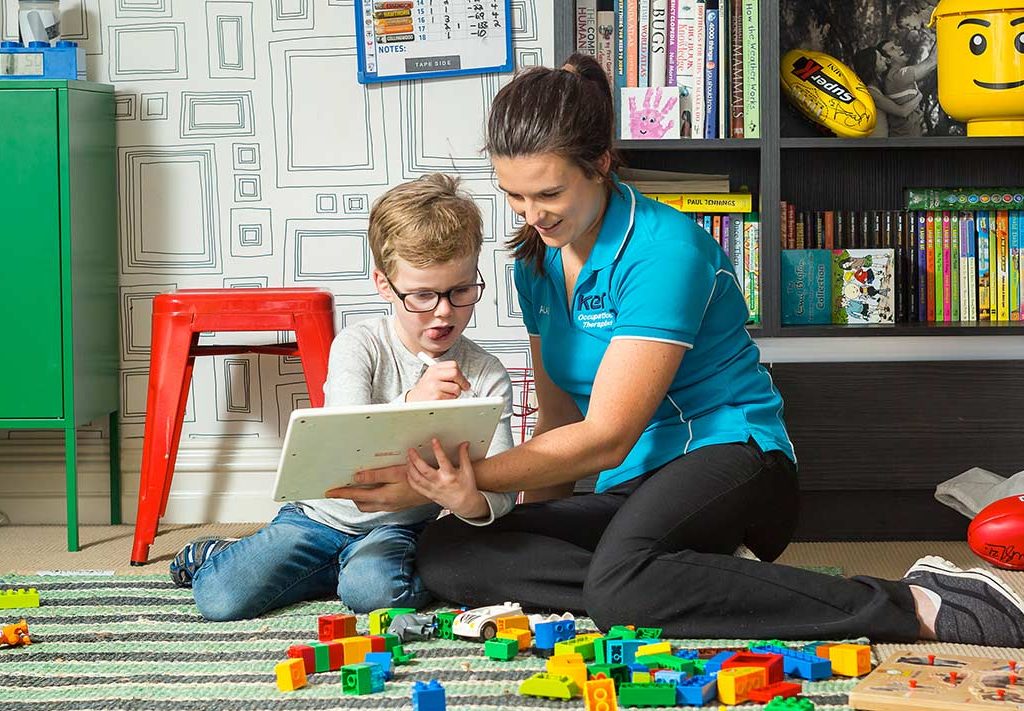
Developmental milestones are the progressive steps your child takes to becoming independent. By understanding early childhood milestones, you are better able to observe, and therefore support, your child’s development.
Knowledge of these milestones, their sequence and their timing, gives parents the confidence to seek early professional advice if they believe there may be an issue.
Click here to read more on the benefits of early intervention.
Where is your child’s development at?
Developmental milestones such as crawling and first words are important, as they assist children to attend, learn and socialise within their environments and according to their age.
Milestones can be broken down into five categories:
- Gross motor skills
- Fine motor skills
- Language skills
- Thinking skills
- Social interaction
Gross motor skills – such as crawling and walking involve the movement and coordination of the arms, legs and other large body parts.
Fine motor skills – such as stacking blocks or colouring involve the movement and coordination of the smaller muscles of the body such as the wrist, hand, fingers, ankle, feet and toes.
Language skills – including speech and comprehension are our ability to use language. Language skills include receptive language, expressive language, listening, reading, writing, literacy and comprehension and can be supported by speech therapy.
Thinking skills – are involved in the process we use when we are trying to make sense of a situation or experience. This involves problem-solving; decision-making, evaluation, memory, organisation, reasoning and critical thinking.
Social interaction – which is the exchange between two or more people and how we act and react to those around us. Social interaction involves eye contact, engagement, emotional regulation and recognition, sharing, turn taking, following rules and regulations, and the feeling of belonging.
Below is a table that highlights the milestones for children aged 2 months to 5 years. These milestones are rough guides, with each child being individual and achieving these milestones at slightly different ages.
Developmental Milestones Table
2 months
- Smiles at the sounds of parent’s voice.
- Follows parents with eyes as they move.
3 months
- Raises head and chest when lying on tummy.
- Starting to grasp with whole hand and playing with hands and fingers.
- Smiles at people other than parents.
4 months
- Babbles and laughs.
- Attempts to imitate sounds.
- Holds head steady.
6 months
- Rolls from tummy to back and back to tummy.
- Starting to move objects from hand to hand using whole hand grasp.
7 months
- Responds to name when called either by looking or babbling.
- Finds partially hidden objects, such as teddy half hidden behind the couch.
- Enjoys peekaboo.
9 months
- Crawls.
- Sits without support.
- Babbles words such as ‘mama’ and ‘dada’.
12 months
- Walks with or without support.
- Says approximately 3 words and still babbling.
- Enjoys imitating people, particularly in language, as well as movements such as waving.
- Pointing with fingers and dropping and throwing objects on purpose.
18 months
- Walking independently, generally with a wider stance.
- Drinking from a cup.
- Says at least 15 words correctly.
- Points to body parts such as arm and leg. Becoming more aware of self.
- Starts to parallel play; play alongside other children.
2 years
- Runs and jumps.
- Speaks in two-word sentences such as ‘come here’.
- Follows simple instructions such as ‘pick up the ball and throw it’.
- Starts to develop pretend play skills such as giving a doll a drink and putting a doll to bed.
- Starts to engage more with other children in play, though still does not understand turn taking and sharing.
3 years
- Climbs well.
- Throwing a ball well and starting to catch.
- Speaking in multiword sentences and starts to ask questions such as what, where and why.
- Sorts objects by shape and colour.
- Starting to play games with other children such as Chasey. Children at this age will not properly understand winning and losing games though may start to engage in them.
- Starting to manage toileting.
- Eating well with spoon and fork.
4 years
- Gets along well with most new people.
- Draws circles and squares, a basic person, and starting to write name.
- Rides a bike with training wheels.
- Can name friends and some things about their friends.
- Can recall what happened yesterday.
5 years
- Able to tell full name, where they live, what school they go to and what year.
- Jumps, hops and skips.
- Gets dressed independently, though still learning to tie shoelaces.
For more information on milestones, visit this PDF put together by the South Australia Government.
Gaining a clearer understanding of developmental milestones will help you to better observe where your child is at, and to support your child’s growth, development and wellbeing. Remember that the milestones outlined above are just a guide. Every child is individual in their development.
If you feel your child may be behind in their developmental milestones, you can consider seeking advice and help from your GP, an occupational therapist, speech pathologist (speech therapy), teacher or child health nurse. They will be able to further assess your child, give you strategies and activities to assist in their development, as well as refer on for further assessment if need be.